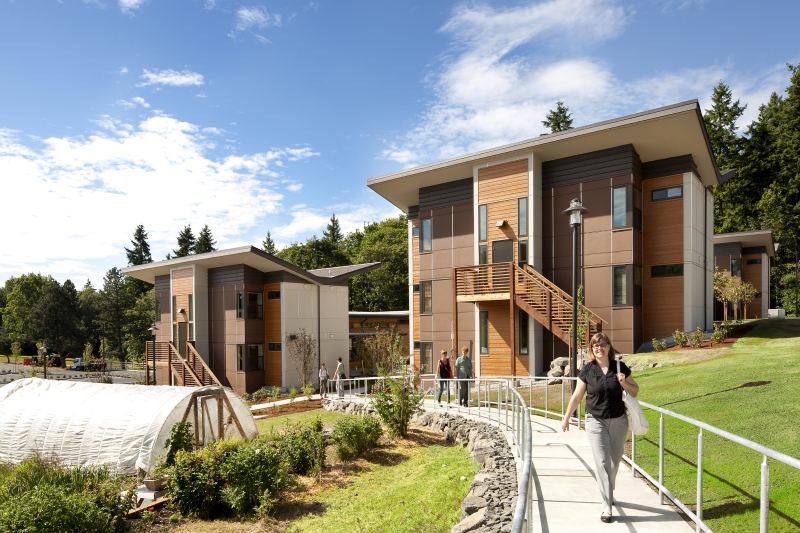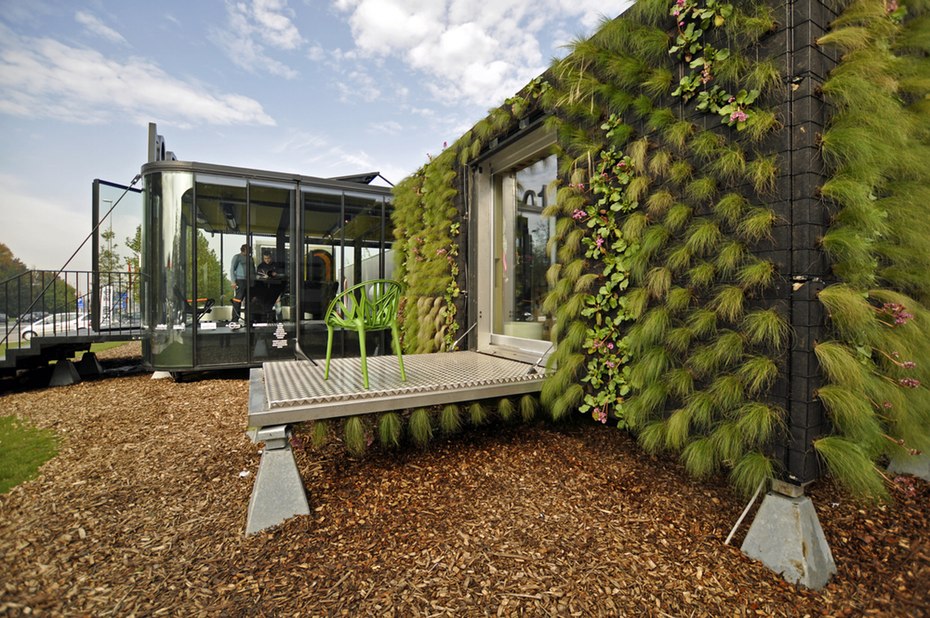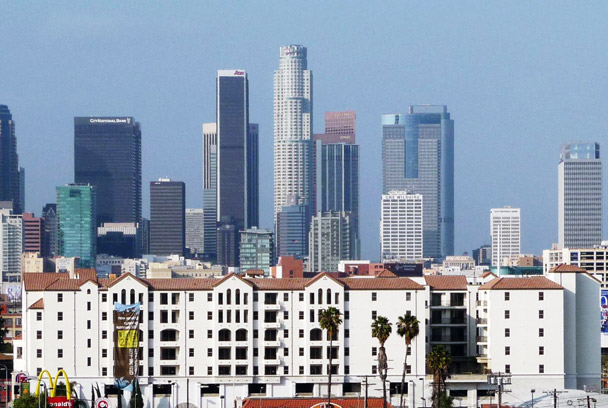By Cutright Elizabeth on April 4, 2016 in News
As demand for modern, energy-efficient and environmentally friendly campus housing continues to grow, colleges and universities are embracing a new era of sustainable student residences.
Recent estimates by the DOE, EPA Energy Star, and ACEE reveal student housing represents a huge opportunity for energy efficiency in multifamily housing. With the chance to reduce energy use by up to 30% at new or existing properties, any energy efficiency or sustainability effort is sure to quickly meet (and probably surpass) initial ROI estimates.

Currently, multifamily properties accumulate more than $30billion in energy costs annually – sometimes paid by tenants, but other times falling into the lap of owners and property managers. With an estimated $3.4 billion in energy savings possible, it makes sense for the student housing industry to focus on sustainability. Additionally, sustainable student housing presents an enormous marketing opportunity for property owners and managers: a recent poll revealed 60% of college students believe protecting the environment should be prioritized, and a whopping 76% support policies encouraging energy efficiency (rather than seeking new energy sources) to meet energy demands.
Stylish and Sustainable in Seattle
Initially conceived as a traditional, multi-story dorm designed to house 130 students, Bastyr University’s 2010 student housing project eventually transformed into a sustainable, LEED certified student village. Located just east of downtown Seattle, Bastyr University prides itself on its position at “the forefront of developing the model for 21st-century medicine.” With a multidisciplinary curriculum focused natural medicine, Bastyr University readily assumed the mantel of sustainable student housing pioneer.
Bastyr’s Student Village is comprised of an 11-cottage complex spread out over 12 acres on Bastyr’s 52-acre campus. Each three-story cottage can house up to 12 students who have access to common areas, a central courtyard and a variety of sustainable features including green roofs, high-efficiency boilers, Energy Star appliances and low-flow plumbing.
Coming in under budget and welcomed with community accolades and unmitigated approval from the student body, the Student Village was awarded Outstanding Multifamily Project of the Year by the U.S. Green Building Council (USGBC) upon its debut in 2010.
In a statement about the USGBC award, Bastyr University President Daniel K. Church declared, “To win such a prestigious national award highlights the level of commitment Bastyr University has to sustainable housing and overall healthy living.”
“…to surpass our goals, win LEED Platinum certification and now be selected as the Outstanding Multifamily Project is deeply satisfying.”
Bastyr University’s Student Village highlights how green building can be wielded to reduce costs and enhance student life on campus. As the first student housing project on the West Coast to receive the LEED Platinum certification, Bastyr’s Student Village continues to serve as an example and inspiration to universities across the country.
Modular and Mobile
KATHO Catholic University in Courtrai, Belgium decided to “think outside the box” for its most recent student housing project. The University is currently working on a student residence prototype, christened “The HUB.” Comprised of mobile “sleeping units’ designed to operate in concert with existing modular facilities including a central hub that functions as a meeting space for students, the HUB was designed to give students privacy and community.

Outfitted with communal kitchens and bathrooms, the HUB uses solar panels and heat pumps to create self-sufficient living spaces. The hubs can connect to up to six personalized units whose portability allows students to take their room with them as they continue their education. The modern, minimalist design of each sleeping space includes built-in desks and beds that peek out between walls.
The Hub prototype currently houses a few brave scholars who are taking full advantage of the innovative environment and collaborative living experience offered by the facility.
“We designed a sustainable and innovative pavilion that hopefully inspires education, teachers and students to innovate their learning process,” explain Hub_01s creators. “We call it: ‘Educational design.’”
Living Up to a Namesake
Named one of the Top Ten Green Projects of 2013 by American Institute of Architects, the Charles David Keeling Apartments at the University of California San Diego (UCSD) harness the latest in energy efficient design, lighting and water resource management to provide stylish, sustainable housing. Named after scientist Charles David Keeling – whose research was instrumental in the study of climate change and the greenhouse effect – the building includes a green roof, daylighting and onsite water recycling.
Able to house up to XX amount of students, the Keeling Apartments use natural ventilation and individually controlled radiant heat panels to manage indoor temperature while forgoing the need for expensive and energy-consuming air conditioning. The C-shaped structure places students at the center of campus amenities, with the dining hall and a central courtyard located nearby.
The first LEED Platinum student housing project in California, the Charles David Keeling Apartments was lauded by the American Institute of Architects as “an example of a relatively large scale student dorm that had an opportunity to really break some important ground in terms of water performance” and energy efficiency.
Parisian Proficiency
Situated on a narrow lot along the edge of Paris’s 19th district, the Basket Apartments are a collection of 192 studios utilizing simple design and state-of-the-art technologies to provide sustainable student housing for the City of Lights. The Units are awash in natural light and use low-impact insulation and ventilation to provide flexible, energy efficient climate-control. Developers designed the Basket Apartments to “provide students with a healthy environment for studying, learning and meeting.”
About the length of a football field, the complex provides residents with identically sized apartments outfitted with kitchenettes, balconies and simple furnishing. Rising ten stories above the Parc La Vilette, the building’s modular structure begins with a shared ground floor and nine modular stories divided in two and connected with a narrow bridge.
Among the building’s many sustainability features are external glass staircases and corridors designed to capture natural light and promote air circulation through the building. Three-hundred rooftop photovoltaic panels provide electricity to the facility, while onsite rainwater harvesting helps cut down on water use and provides irrigation the property’s green spaces.
A Deeper Shade of Green

With 161 units and 10,000 feet of commercial space, University of Southern California’s (USC) West 27th Place can be considered a crown jewel of USGBC’s LEED Platinum certifications. Envisioned as a place where students can access amenities while inhabiting an eco-friendly space, West 27th debuted with all but one of its units already leased; a result CityView Executive Chairman Henry Cisneros attributed in part to the building’s LEED credentials.
“Students of the present generation are coming more and more to the realization they want to be contributors to environmental solutions, and sensitive to climate change,” Cisneros told Multi-Housing News in 2011. “Was that the decisive consideration in leasing up? Probably not. But it certainly gives it a dimension of distinction, and aligns it with students’ societal objectives.”
Not only is the property bedazzled with a slew of environmentally friendly attributes – low-flow water fixtures, Energy Star appliances and energy efficient ventilation – the building’s construction was equally “green”: 95% of the development’s construction waste was recycled. The residence also abuts the Expo light rail line, providing tenants with easy access to the university’s tram and bus line.
For Cisneros, 27th Place exemplifies the future of multi-housing construction in an era of continued environmental uncertainty and the dangers posed by climate change.
“My own sense is we want to do this every time we possibly can,” Cisneros explained to MHN, If we fail, literally all hell breaks loose.”
“[27th Place] is particularly suitable for a university environment,” concludes Cisneros, “…universities are about the future, and about inculcating societal values in young people.”


